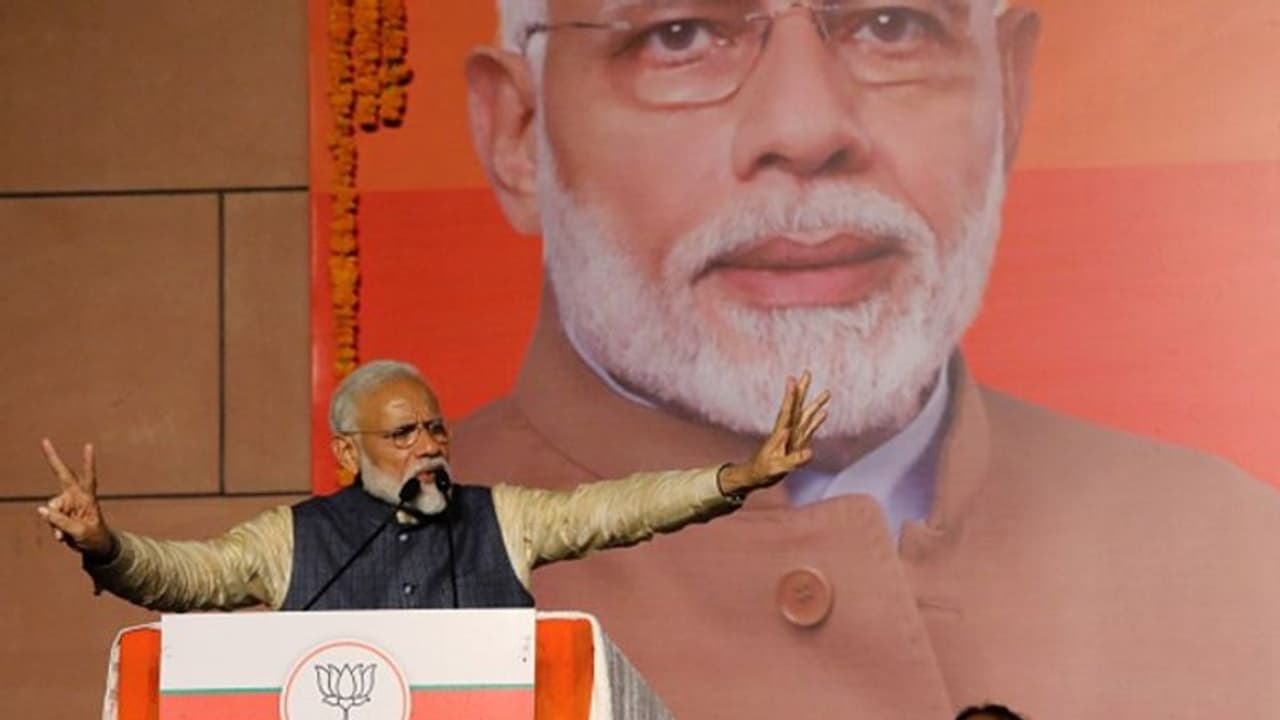This time around, the NDA which has won 353 seats, will have 30 representatives from the five southern states — the BJP has 25 and four respectively from Karnataka and Telangana, while AIADMK will provide one seat from Tamil Nadu. Kerala and Andhra Pradesh will have no representative in the treasury benches of the Lok Sabha
At the time of demitting office, the previous Narendra Modi government had in place four ministers from south India — Anant Kumar Hegde, DV Sadananda Gowda, Alphons Kannanthanam, Pon Radhakrishnan. If you include Nirmala Sitharaman (elected to Rajya Sabha from Karnataka), the number will rise to five. The list will swell to six if you magnanimously rope in Suresh Prabhu on the tenuous ground that he made it to the Rajya Sabha from Andhra Pradesh.
For the record, the NDA had 38 Lok Sabha MPs from the south after 2014 elections. But once the TDP, with its 15 MPs, walked out on it, the number shrunk to 23.
Also read: India wins yet again, says PM Modi
This time around, the NDA which has won 353 seats, will have 30 representatives from the five southern states — the BJP has 25 and four respectively from Karnataka and Telangana, while AIADMK will provide one seat from Tamil Nadu. Kerala and Andhra Pradesh will have no representative in the treasury benches of the Lok Sabha.
So, on the looks of it, the Modi team this time too would be top-heavy with north Indian names. Even from south, Karnataka is bound to dominate as it has provided most of the numbers. The AIADMK man (O Panneerselvam's son, OP Ravindranath) and a Telangana person are being talked of as outside chances to make it to the ministerial squad. But these are early days yet as far as ministerial composition goes.
Also read: Rajinikanth congratulates PM Modi
Anyway, just to provide a contrast, both the UPA governments had plenty of south Indian ministers (over 20), and that of course was because the UPA had relatively more MPs from the southern states.
The NDA can rightfully justify the meagre presence of the south as representative of the strength of its MPs from each state. How can it appoint ministers when it doesn’t have enough MPs to choose from?
However, politically speaking, the NDA (read: the BJP) has to find a way to grow in these parts.
Also read: New York Times not happy with Modi's victory
The south will be crucial for the NDA's future. The southern states are said to represent 20% of India’s geographical area and a fifth of its population. The south is decidedly ahead of other states in the Union on both the socio-economic and human development fronts. Industrial growth is also better in the south.
But with under representation in the ministerial team, the NDA's opponents do go on the narrative that the BJP is not interested in south's development. This eventually becomes an election issue and voting is done on based on this discourse. And it comes back to hurt the NDA, as it has in this election.
So the biggest creative challenge for the NDA now is to somehow figure out a plan to accommodate deserving names from the south so that the states get adequate footing in the council of ministers, and ensure that the south doesn't feel left out from the general scheme of things.
Aside from blooding ministers, the NDA should also look beyond the traditional logic of extending most growth projects and developmental impetus to the areas that have voted for the ruling combine. Notwithstanding their political preferences, the states, which are critical for the country’s socio-economic growth, deserve stronger backing from the government.
These are indeed tough tasks when narrow-minded localism at its peak. Certain political forces in Tamil Nadu and Kerala have taken vainglorious pride in not having voted for the NDA. This injects a sense of provocative chauvinism in the exchanges.
But the onus is on the victors, in this case the NDA, to rise above piffling and puerile sentiments that are sought to be engendered by vested interests at play in such situations.
Politics can be parochial. Governance should not be.
